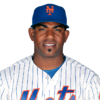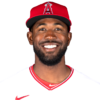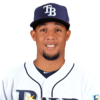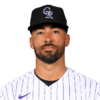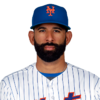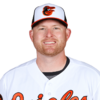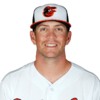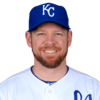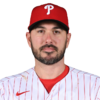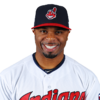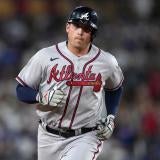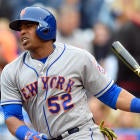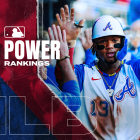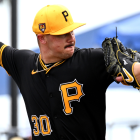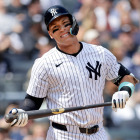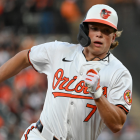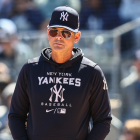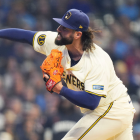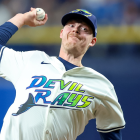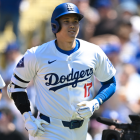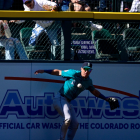Free agency officially started at 12:01 a.m. ET Tuesday, and this week CBSSports is going to break down the top free agents at each position. And rank them. What fun would this be without rankings?
This offseason features one of the weakest free-agent classes in recent memory, especially on the starting pitching side. In the outfield, though, there's at least some depth at the top and some interesting bounce-back candidates peppered throughout.
Here, then, are the top 15 free-agent outfielders ranked based on future value, not what they did this past season or in their careers. We're looking at what a player is expected to do going forward, because that's the player a team is signing. Onward ...
Cespedes is very much miscast as a center fielder, but he's one of the best power threats on the market. Over the past two seasons, Cespedes has batted .286/.340/.537 (134 OPS+) while averaging 37 home runs per 162 games played. He'll be going into his age-31 season. Cespedes seemed a bit over his head in 2015, but this past season he produced at a similar level, at least on a rate basis. He's likely headed for a nine-figure contract.
Fowler is a reliable on-base threat with some pop to the gaps and some speed on the bases. As well, in 2016 he began playing a deeper center field, which helped him restore his once impressive reputation with the glove. Suffice to say, a number of teams could use a plus defensive center fielder who also functions as a productive lead-off man. Fowler will turn 31 during spring training.
Gomez for a long time had a strong track record of power after altering his swing on the Brewers' watch. With the Astros, though, he showed signs of premature decline at the plate -- so much so that he wound up getting DFA'd in August. Once he signed on with Texas, we saw signs of the old Gomez at the plate, in terms of approach and production. The guess here is that he continues to hit in the near- to mid-term. On the defensive end, Gomez can still get by in center and be an asset at the corners.
Desmond's days as a shortstop appear to be over, but he adapted quite nicely to the defensive demands of center field this past season. While his numbers at the plate faded as the season wore on, he still wound up hitting a reasonably productive .285/.335/.446 (104 OPS+) with 22 homers and 21 stolen bases. There's some question as to whether Desmond, heading into his age-31 season, will have more than an average bat moving forward, but an average bat at an up-the-middle position has value.
For so long, Bautista has been one of the elite power hitters in the game (from 2010-15, he hit 227 homers). This past season, he had trouble staying healthy, and his production on a rate basis slipped significantly. Yes, Bautista was still productive when healthy, but he's now 36 years of age. Joey Bats draws walks and still flashes home run power, so he's going to remain useful in the near-term, but his deep decline phase probably isn't far away.
Trumbo's tremendous power is obviously a major asset, and it's going to earn him a lot of money on the market. On the downside, Trumbo's a low-OBP slugger who gives back a lot runs with the glove. He's best suited to DH at this stage of his career. The power's great and coveted, but Trumbo's quite limited in other regards.
Reddick won't turn 30 until February, and he's a useful hitter at the plate while being a plus fielder in right. The knock on Reddick is his durability. He's been on the disabled list several times in his career, and since 2012 he's averaged just 129 games per season. Reddick's also long shown pronounced weaknesses against left-handed pitching. All that said, he's a two-way threat who'll have plenty of suitors.
Saunders in 2016 was mostly healthy for the first time in a long time, and that helped him author some of the strongest numbers of his career. What might dampen his market is that he still has a substantial injury history and that his production faded badly after the break (Saunders hit .178/.282/.357 in the second half). On the upside, the Jays didn't tender a qualifying offer to Saunders, so the team that signs him won't have to forfeit a high draft pick.
Beltran enjoyed a nifty rebound season in 2016, as he batted .395/.337/.513 (122 OPS+) with 29 homers in 151 games for the Yankees and Rangers. On the other hand, Beltran turns 40 in April and really has no business playing the field anymore. In reality, you may be talking about the primary half of a DH platoon in 2017, and at his age, it's of course possible that his production craters for good at any moment. In a just world, Beltran is a future Hall of Famer.
Holliday's best suited to DH these days or spend the majority of his time at first base. He can still hit for power (20 homers in 110 games for the Cardinals), and he's still patient at the plate. Nagging injuries have become more of a concern for Holliday in recent seasons, and in related matters, he's going into his age-37 campaign. He's probably best suited to an AL team that doesn't have a regular need at the outfield corners.
Rasmus has home run power, and he's a run-saving glove at the corner positions. He also just turned 30, which makes him reasonably young as free agents go. That said, he's coming off the worst offensive season of his career, and that's going to hurt his market. Rasmus' .257 BABIP gives hope for a positive correction in 2017, but he still possesses a risky offensive profile.
Moss isn't going to give you a high batting average and OBP or much in the way of defensive value, but when healthy, he's a pretty rich source of left-handed power. Going into this age-33 season and no longer really viable outside of platoon-advantaged situations, Moss is a complementary piece these days, but his power and ability to get by in the outfield corners (and at first base) make him worthy of a supporting role.
After a deeply disappointing 2015, Joyce got back to being a productive hitter at the plate this past season. In 293 plate appearances for the Pirates, he put up an OPS+ of 131 and now has a 114 OPS+ for his career. He's very much a platoon guy whose exposure to left-handed pitching has been limited over the years, but he's not a bad use of roster space in the here and now.
Yes, Davis was a conspicuous part of the AL champ's roster, but he was unproductive at the plate (sub-.700 OPS) and isn't an optimal center fielder at age 36. Davis can still add a great deal of value on the bases, but he's hardly any kind of cornerstone.
He's 35, and he has no business seeing time in center field these days. On the other hand, Pagan's a switch-hitter with balanced platoon splits for his career who's also capable of league-average production, at least for now. He's worth a look as a depth piece on a one-year contract.







